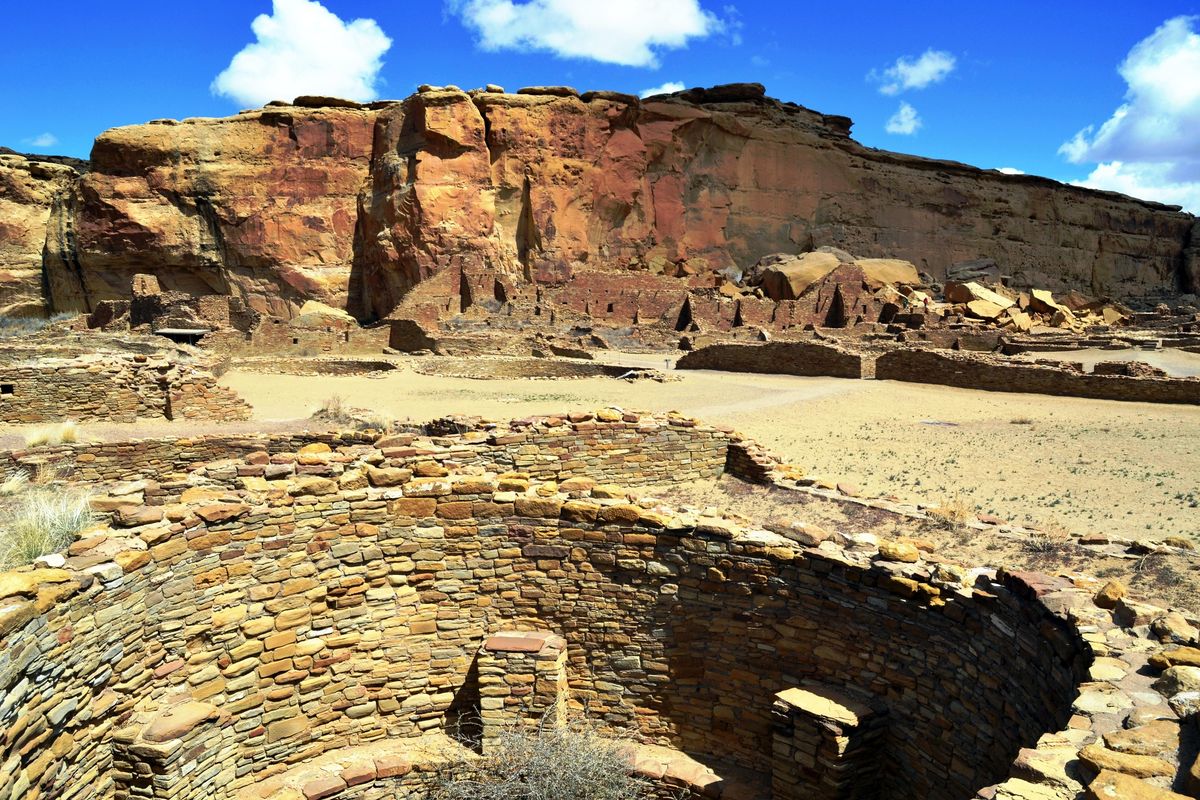Ancient Southwest cultures are magnificent display at national historic park in New Mexico

Hundreds of years ago Native American tribes constructed stone buildings throughout the Southwest. Today, stunning ruins can be found in Arizona, New Mexico and Utah.
Multicolored rocks, predominately red and orange, were used to create shelters that would protect people from a very harsh environment.
The craftsmanship of the rock walls, some of which rise three or four stories, is obvious. They are laid straight from top to bottom and, more amazing, many of the rocks have been shaped into blocks using nothing but stone tools.
To view ruins and learn about ancient Southwest cultures, among the best places to visit is Chaco Culture National Historical Park in north central New Mexico..
Chaco is not an easy place to get to, but it’s worth the effort. There are two entrance roads, arriving either from the north or south, with washboarding, potholes and ruts to maneuver. If it is raining or just after, they can be impassable. However, during dry times a standard car taking the access roads slowly and carefully can make the trip. The main interior road is paved.
Chaco Canyon is considered one of the richest archaeological locales in North America. It is about a mile wide and 15 miles long, and its arid, desolate environment makes it hard to believe that 1,100 to 1,200 years ago an estimated 5,000 Native Americans lived in the area. Rising above the sagebrush and scattered around the valley are multistoried rock ruins, some with the remains of hundreds of rooms. These were well-planned communities, with structures designed with hundreds of rooms before they were built – not added on as the population grew. Many of the great houses were oriented to solar, lunar and cardinal directions and had sophisticated astronomical markers.
Among the ruins is Pueblo Bonito, a 600-room structure on the top of a must-see list when visiting this place.
Circular structures with rock walls excavated into the ground like a modern house with a daylight basement are common throughout the park. Called “kivas,” they had a covered roof with an entrance hole in the center in which a ladder was used. Some smaller kivas appear to have been used by a family while others are quite large and evidently a center gathering place with rock benches around the inside wall.
Although distinctive pottery was commonly found throughout Southwest ruins, researchers believe most at Chaco was imported. However, exquisite beads, necklaces, ornaments and pendants were made using inlayed turquoise. Far-reaching trade of copper bells seashells, macaws, and chocolate was being done between the early 900 and mid-1100s.
There are also petroglyphs, pictographs and ancient roads to explore in the park.
What happened to the thousands of people who abandoned their metropolis? Researchers believe an extended drought may have dispersed them in several directions, including to Mesa Verde. The masonry found there is similar to what is found at Chaco.
Chaco Culture National Historical Park is an outdoor museum that will give visitors a feel for the character of the people who lived and worked there.